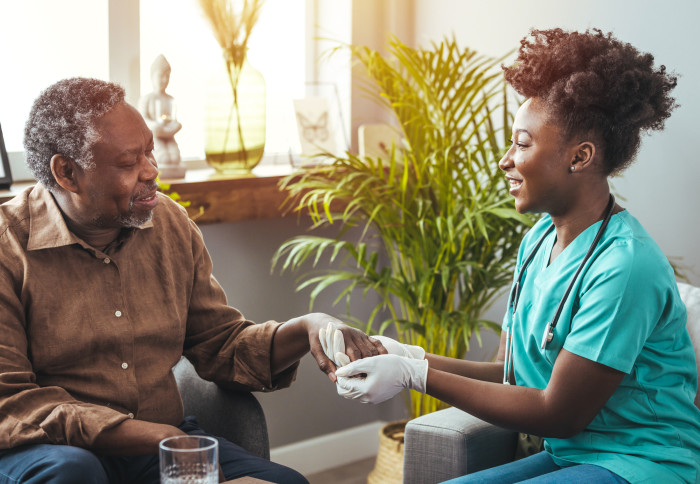There’s been a surge in interest — from investors and hospitals alike — in startups developing technologies to monitor and manage Parkinson’s disease symptoms. These companies are attracting multi-million dollar funding rounds, rolling out new wearable and app-based tools, and forging partnerships with major health systems.
One of the leading names in this space is Kneu Health (previously called Neu Health), a spin-out from the University of Oxford. It recently secured €1.9 million in funding with support from Oxford Science Enterprises and Cedars-Sinai Intellectual Property Company, according to Parkinson’s Blog. Their platform is built to help patients with Parkinson’s (and dementia) to actively monitor symptoms via smartphone and clinician dashboards.
Meanwhile, Rune Labs, based in San Francisco, has been scaling up rapidly. Its app, StrivePD, uses sensors in Apple Watches to gather data on tremors, dyskinesia, sleep, activity, medication adherence, and other motor/non-motor metrics. Rune Labs has raised significant funding (about $12 million in a strategic round in early 2024) to grow its care management and clinical research tools.
Also in the mix is Empatica, which has made a major move by acquiring PKG Health. This deal brings together Empatica’s wearable devices and monitoring platform with PKG Health’s well-validated algorithms for movement disorders. The acquisition aims to improve diagnostic precision, enrich clinical trials, and deliver better remote monitoring tools.
Such investments are part of a broader shift: whereas in the past, Parkinson’s symptom tracking traditionally happened via in-person doctor assessments and patient recollections, these new technologies promise continuous, objective tracking in everyday life. They help capture what happens in between clinic visits, which often is where patients struggle most.

Table of Contents
Hospital Partnerships: From Pilots to Integrated Care
It’s not just about raising money. These startups are increasingly entering into key partnerships with hospitals and health systems to trial, validate and scale their tools.
For instance, Rune Labs has been working with Kaiser Permanente in California. In a pilot, patients who used the StrivePD app and wearable setup saw a 42% drop in emergency room visits and 18% fewer visits to movement disorder specialists. These are striking results, considering the chronic nature of Parkinson’s, where flare-ups often lead to emergency attention. The data also showed benefits in exercise frequency and medication adherence among users.
Another example: Neu Health (Kneu Health) has teamed up with Leeds Teaching Hospitals Trust in the UK to deploy a smartphone app for Parkinson’s symptom monitoring and management. Their tools are being trialled under NHS settings to see how digital monitoring and remote care can reduce the burden on both patients and health providers..
Hospitals and health services are recognising that continuous symptom tracking can help optimise treatment plans, anticipate issues like motor fluctuations, falls, or sleep disturbances, and allow for more personalised interventions. That means clinicians have more detailed, real-world data to make decisions, instead of depending entirely on patient memory or brief clinic visits. The tech also helps monitor side effects, evaluate responses to medications, and even suggest lifestyle changes.
Technological Advances: Wearables, AI & Digital Biomarkers
What’s driving the progress? Several technological advances are converging to enable more precise, reliable Parkinson’s symptom monitoring.
- Wearables & sensors: Devices like Apple Watch, wrist-wearables, actigraphy devices, and other sensor-enabled wearables are being used to capture motion, tremors, sleep, bradykinesia (slowness of movement), dyskinesia (involuntary movement), gait, fluctuations and more.
- Validated algorithms/digital biomarkers: Algorithms from companies like PKG Health have been validated via peer-reviewed studies (70+ studies) and are used in many clinical sites across different countries. These tools translate raw sensor data into clinically relevant metrics. Empatica’s acquisition of PKG Health means their platform can combine wearables with these algorithms to give richer insights.
- AI / machine learning: Some tools now integrate AI in order to generate summaries, detect trends over time, predict risk (for example, of falls or medication side effects), and deliver coaching or feedback between clinic visits. Rune Labs, for example, has introduced GenAI clinical support tools as part of its StrivePD suite.
- Remote and hybrid care models: The pandemic accelerated interest in remote health care. For Parkinson’s, remote monitoring enables doctors to see what patients experience in daily life, not just during scheduled visits. These models help reduce travel, improve patient comfort, and fill gaps in specialist access. Startups are building platforms that support both patients and clinicians with dashboards, notifications, reminders, and data sharing.
These technology advances aren’t just futuristic ideas — they are being deployed, tested, and scaled now, showing measurable impacts.

Challenges, Road Ahead & What This Means for Patients
While the progress is encouraging, there are still significant challenges to overcome before these technologies become widespread in Parkinson’s care, especially in lower-resource settings (like many parts of Nigeria and other African countries).
- Regulation & validation: Many tools must pass through regulatory processes (for example, FDA “clearance” in the US, or equivalent bodies elsewhere). Validated clinical evidence remains key for credibility among clinicians. Some devices and algorithms already have strong validation; others are in pilot stages.
- Integration into existing care systems: For maximum benefit, these tools must be accepted by healthcare providers, integrated into electronic health records, and included in care protocols. Sometimes this requires training, changes in workflow, or reimbursement models that support remote monitoring and telehealth.
- Data privacy, usability & accessibility: Patients need to trust that their data is safe. Wearables must be comfortable, affordable, and easy to use. For older populations, or those who are not tech-savvy, there may be barriers.
- Cost & equity: Even when tools are proven effective, the cost of devices, apps, subscriptions, or wearable hardware may limit access for many patients and health systems. There is a risk of creating disparity — where only those in more resourced settings benefit.
- Sustainability of funding: Startups rely on rounds of investments; scaling often costs more than R&D or pilot trials. To sustain operations, companies will need ongoing revenue, reimbursement, or partnerships that cover recurring costs.
Implications & Outlook: What Patients in Nigeria Should Watch For
For people living with Parkinson’s in Nigeria, what do these global developments mean? A few key implications and possible future benefits:
- These innovations suggest that in future, Nigerian hospitals or neurology clinics might adopt remote monitoring tools that allow patients to track symptoms from home. That could reduce travel to specialist centres, cut waiting times, and help doctors respond more quickly to symptom changes.
- There is potential for local or regional startups to adapt or build similar technologies suited to Nigerian contexts — for example, tools that work well with limited internet connectivity, with battery-efficient wearables, or at a lower cost.
- As partnerships grow between tech startups and hospitals globally, institutions in Nigeria may be able to license or partner with global innovators or engage in pilot studies to validate tools locally.
- For caregivers, the family network, and community health workers, such tech could support better remote care, more timely interventions, and possibly better quality of life.
- Importantly, these developments heighten the visibility of Parkinson’s disease and the care gaps around it. As awareness improves, there is potential for policy changes (government, health ministries) to support digital health, wearable tech, and remote care.

Conclusion
Startups supporting Parkinson’s care are now at an inflexion point: bolstered by new funding, disciplined by hospital and health system partnerships, enabled by wearables and AI, and gradually moving from experiment to everyday use. For patients — whether in Europe, the US, UK, or potentially in Nigeria — these innovations offer hope that Parkinson’s management can become more responsive, personalised, and less burdensome.
Join Our Social Media Channels:
WhatsApp: NaijaEyes
Facebook: NaijaEyes
Twitter: NaijaEyes
Instagram: NaijaEyes
TikTok: NaijaEyes







































